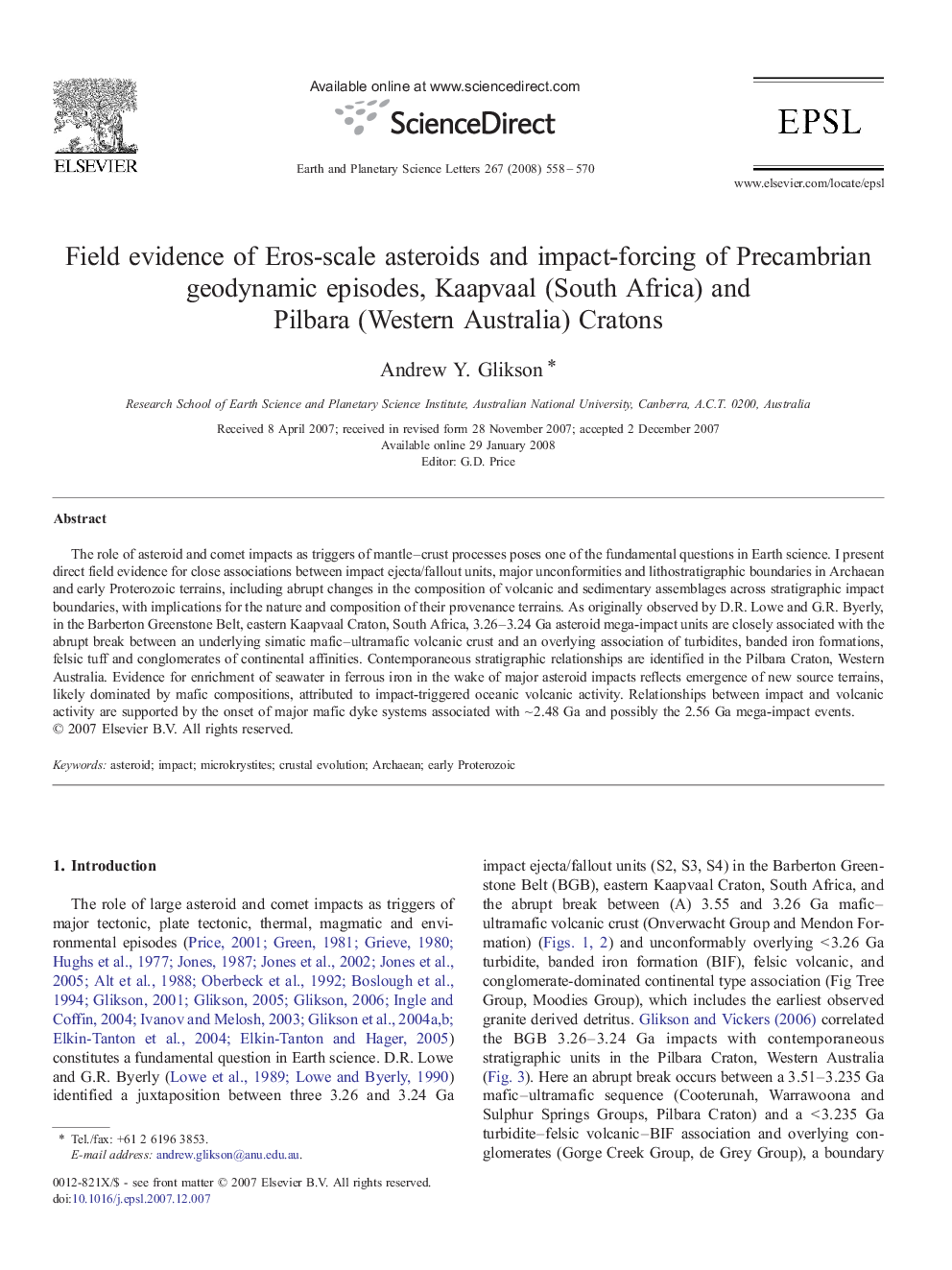| Article ID | Journal | Published Year | Pages | File Type |
|---|---|---|---|---|
| 4679962 | Earth and Planetary Science Letters | 2008 | 13 Pages |
The role of asteroid and comet impacts as triggers of mantle–crust processes poses one of the fundamental questions in Earth science. I present direct field evidence for close associations between impact ejecta/fallout units, major unconformities and lithostratigraphic boundaries in Archaean and early Proterozoic terrains, including abrupt changes in the composition of volcanic and sedimentary assemblages across stratigraphic impact boundaries, with implications for the nature and composition of their provenance terrains. As originally observed by D.R. Lowe and G.R. Byerly, in the Barberton Greenstone Belt, eastern Kaapvaal Craton, South Africa, 3.26–3.24 Ga asteroid mega-impact units are closely associated with the abrupt break between an underlying simatic mafic–ultramafic volcanic crust and an overlying association of turbidites, banded iron formations, felsic tuff and conglomerates of continental affinities. Contemporaneous stratigraphic relationships are identified in the Pilbara Craton, Western Australia. Evidence for enrichment of seawater in ferrous iron in the wake of major asteroid impacts reflects emergence of new source terrains, likely dominated by mafic compositions, attributed to impact-triggered oceanic volcanic activity. Relationships between impact and volcanic activity are supported by the onset of major mafic dyke systems associated with ~ 2.48 Ga and possibly the 2.56 Ga mega-impact events.
